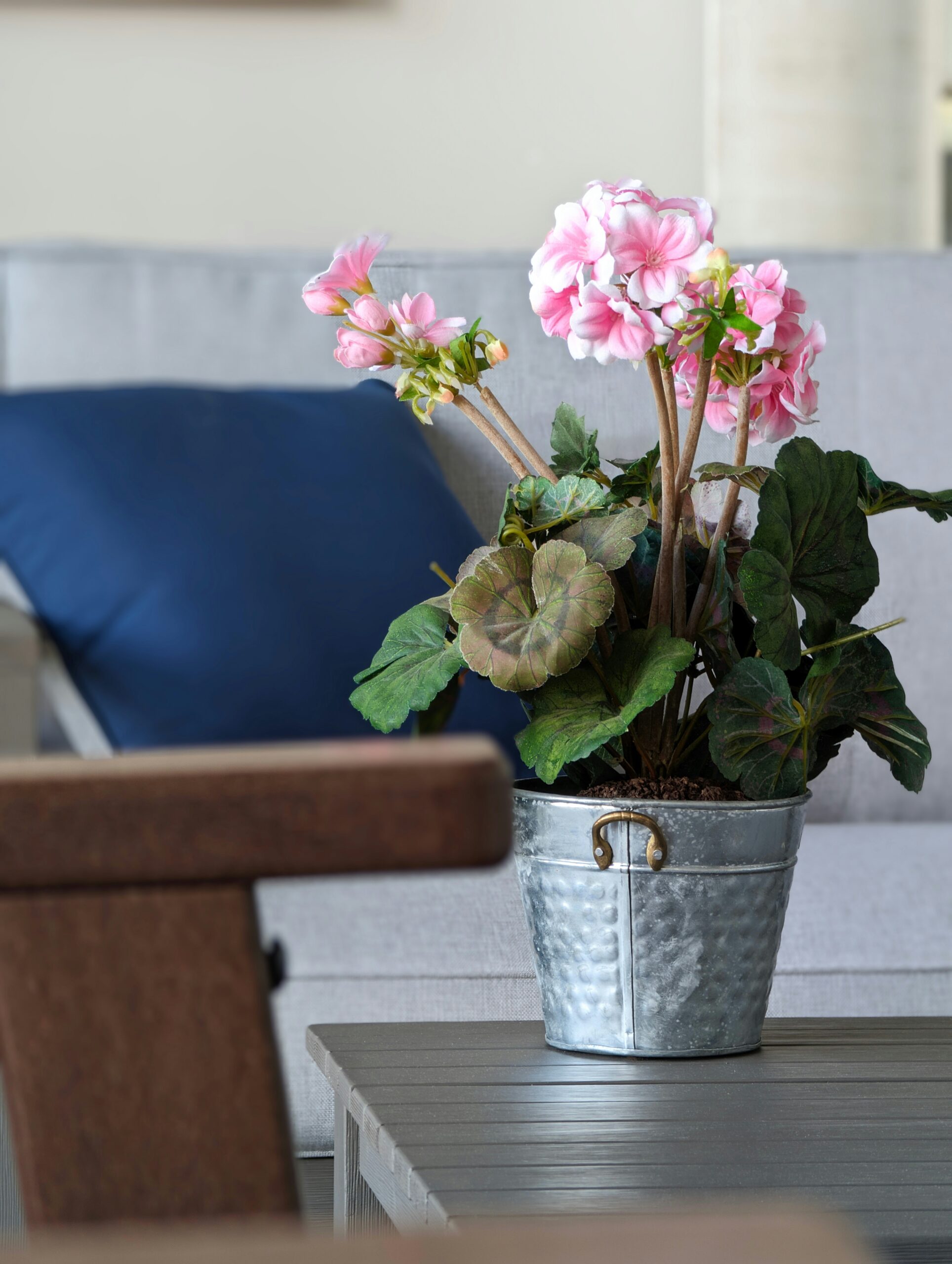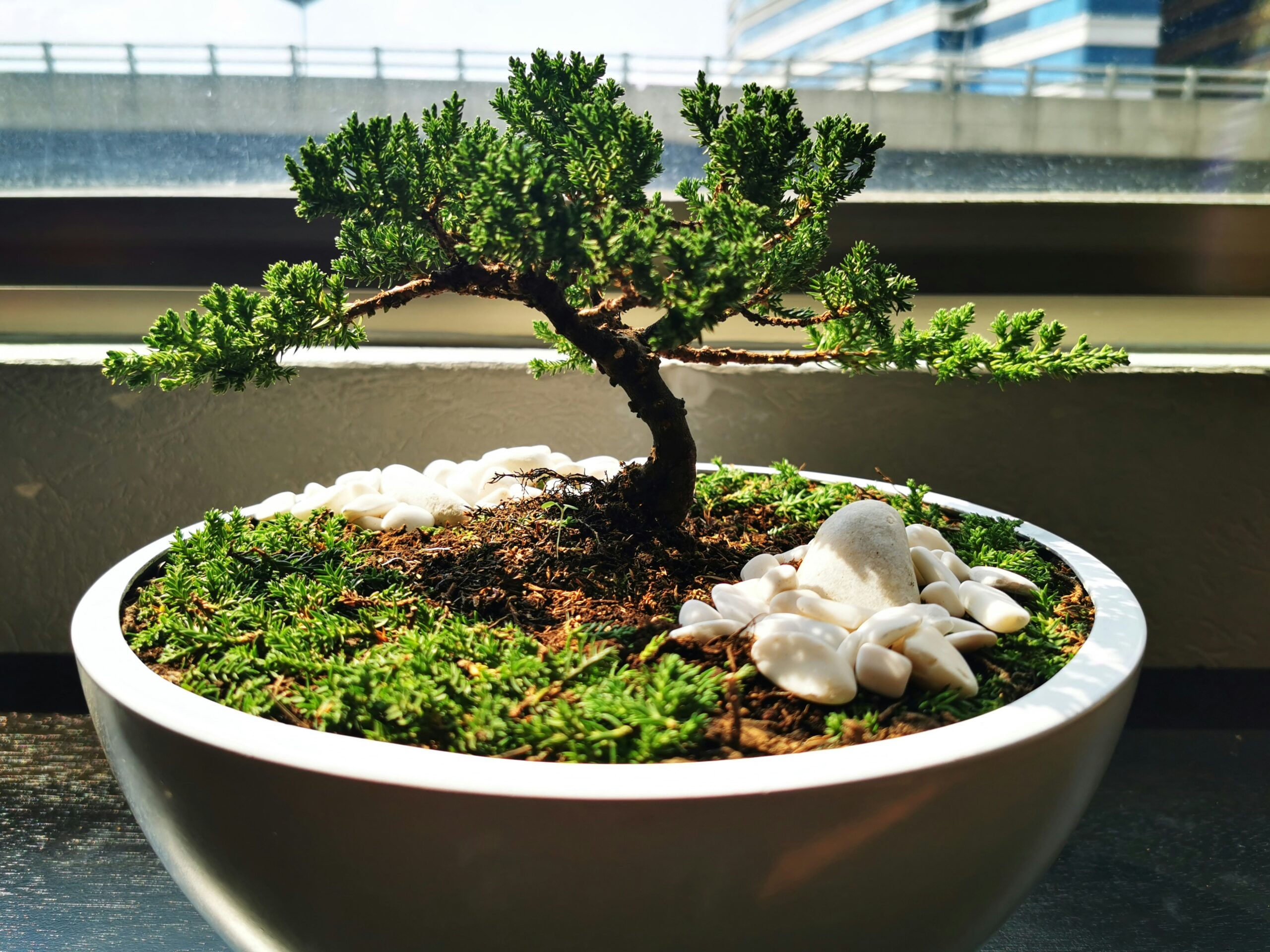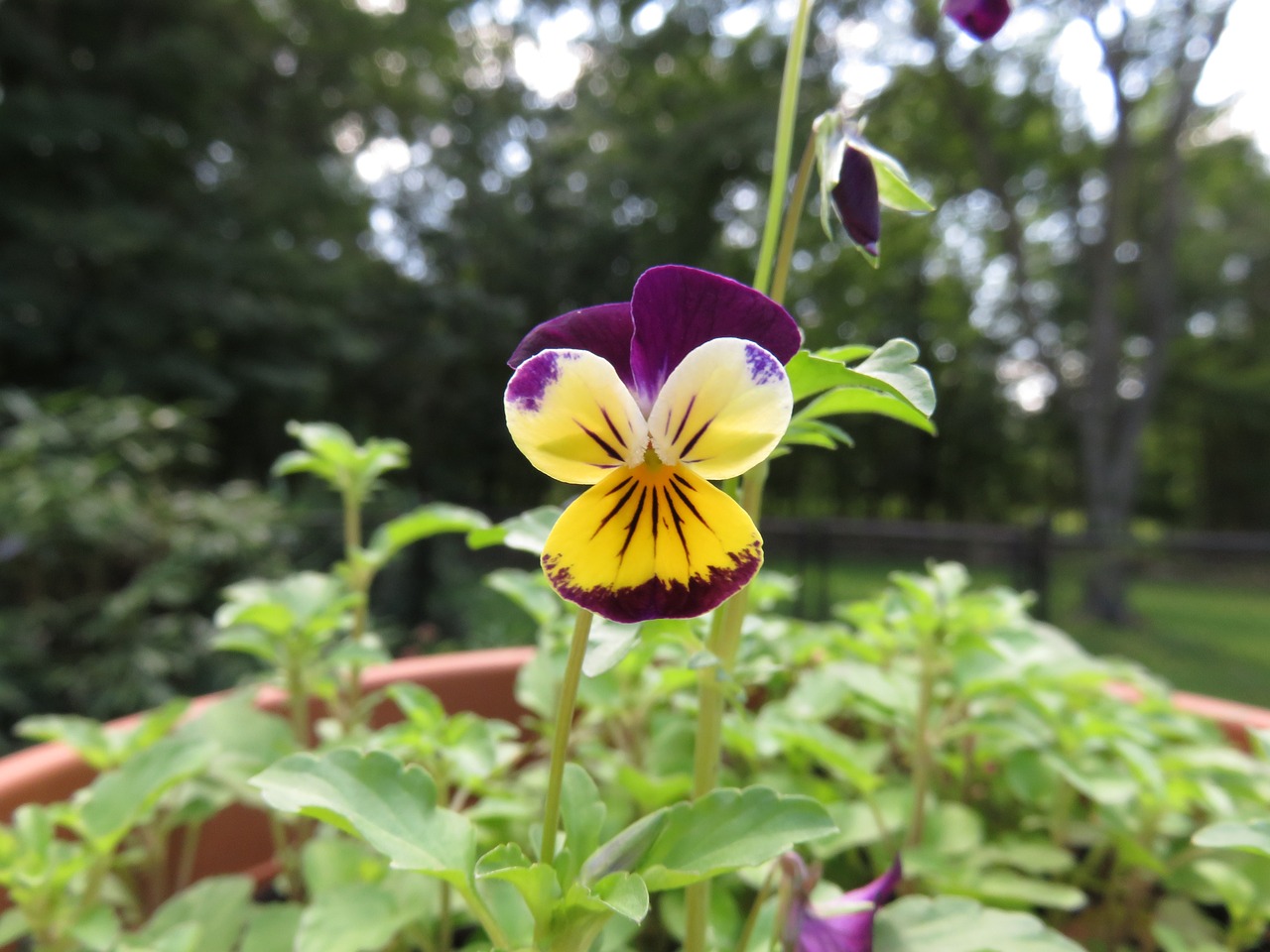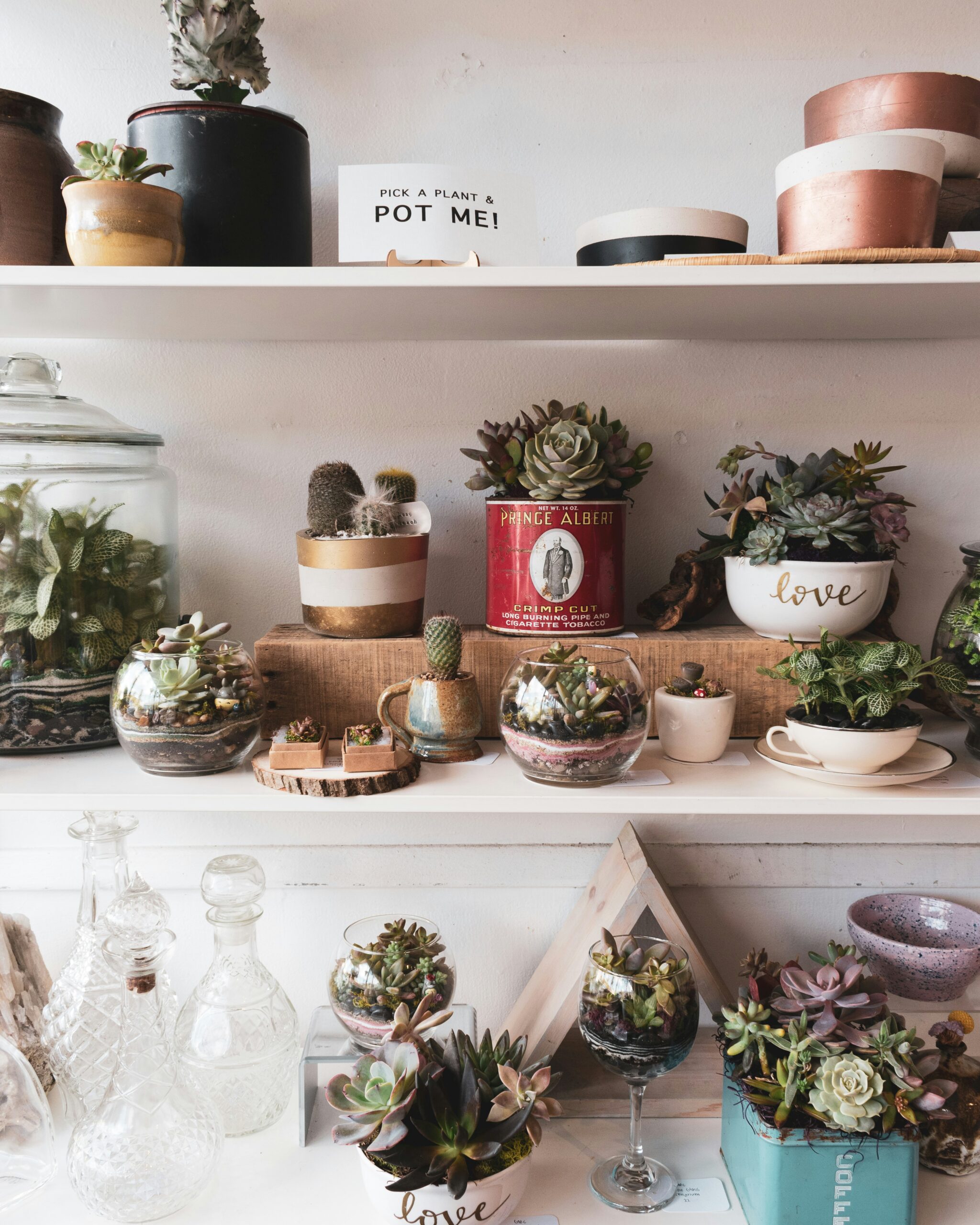This site contains affiliate links. I may earn a small commission, at no extra cost to you.
This post shows you the best plants for growing in self-watering pots!
Have you tried self-watering pots? I bought one on accident after scavenging for plants in the clearance section.
I never really understood the value of them and using them is still a very controversial topic in the container garden community.
However, after using one for a few months now, I can tell you these pots can definitely come in handy, it just depends on the type of plant!
If you’re a beginner with plants, self-watering pots can be a game-changer. They help keep your plants hydrated even when you forget to water them.
Let’s explore the ten best plants for self-watering pots and share some tips to get you started!
Be sure to pin and save for later!
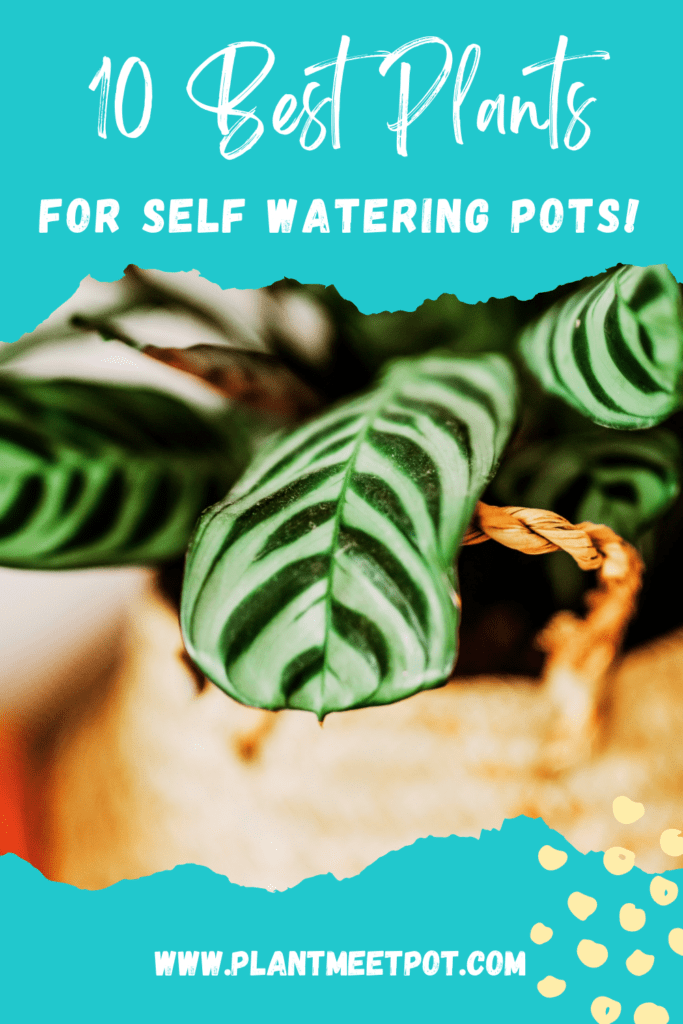
Tips for Using Self-Watering Pots
Start by choosing the right size pot for your plant, ensuring there’s enough space for the roots to grow. Use a high-quality potting mix designed for container gardening, because you’ll start off your plant with the right texture and nutrients.
When filling the reservoir, use room temperature water to avoid shocking the roots. Regularly check the water level indicator to ensure your plants have a consistent water supply.
Lastly, don’t forget to flush the soil occasionally to prevent the buildup of salts and minerals from fertilizers, which can harm your plants over time.
1. Spider Plant
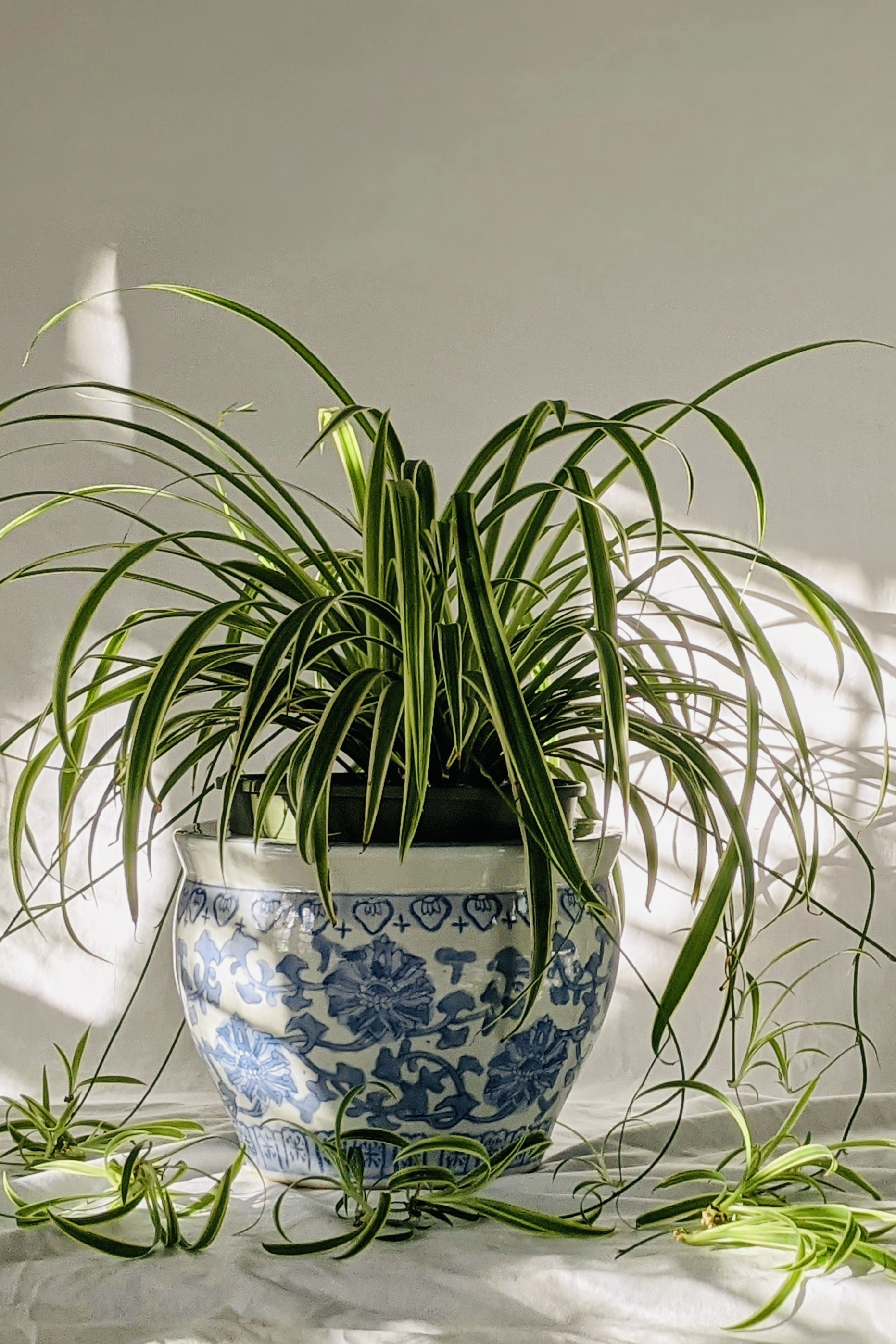
Why it’s great: Spider plants are tough and can thrive in low light. They also help purify the air.
Spider plants are an excellent choice for self-watering pots because they thrive on consistent moisture. These resilient plants are perfect for beginners and can adapt to various light conditions. With their arching leaves and small white flowers, spider plants add a touch of elegance to any space. To ensure they flourish, place your spider plant in indirect light and check the water reservoir regularly to keep it filled. Additionally, occasional feeding with a balanced liquid fertilizer will keep your plant healthy and vibrant.
Tips for self-watering pots: Spider plants love consistent moisture but don’t like soggy roots. A self-watering pot can keep them just right.
2. Pothos
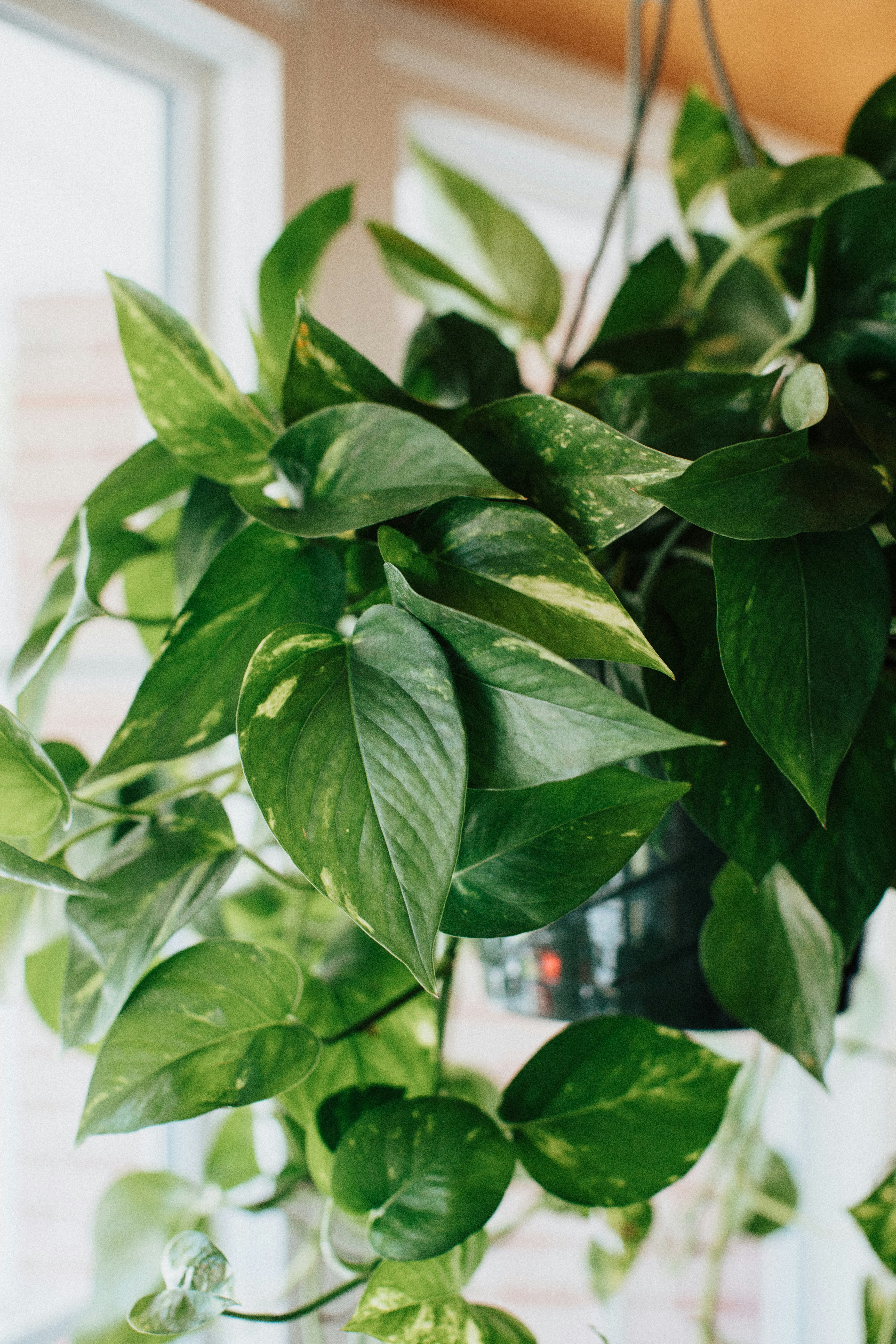
Why it’s great: Pothos is almost indestructible and grows well in various conditions. It has lovely trailing vines.
Pothos, or devil’s ivy, is a versatile and low-maintenance plant perfect for self-watering pots. Its trailing vines and heart-shaped leaves make it a beautiful addition to any indoor garden. These plants thrive in a variety of light conditions, from low to bright indirect light. The self-watering pot ensures they receive consistent moisture, reducing the risk of underwatering. Fertilize your pothos every two to three months to support its vigorous growth and periodically trim the vines to encourage bushiness.
Tips for self-watering pots: Pothos enjoys moderate moisture. Make sure to allow the top soil to dry out slightly before refilling the water reservoir.
3. Peace Lily
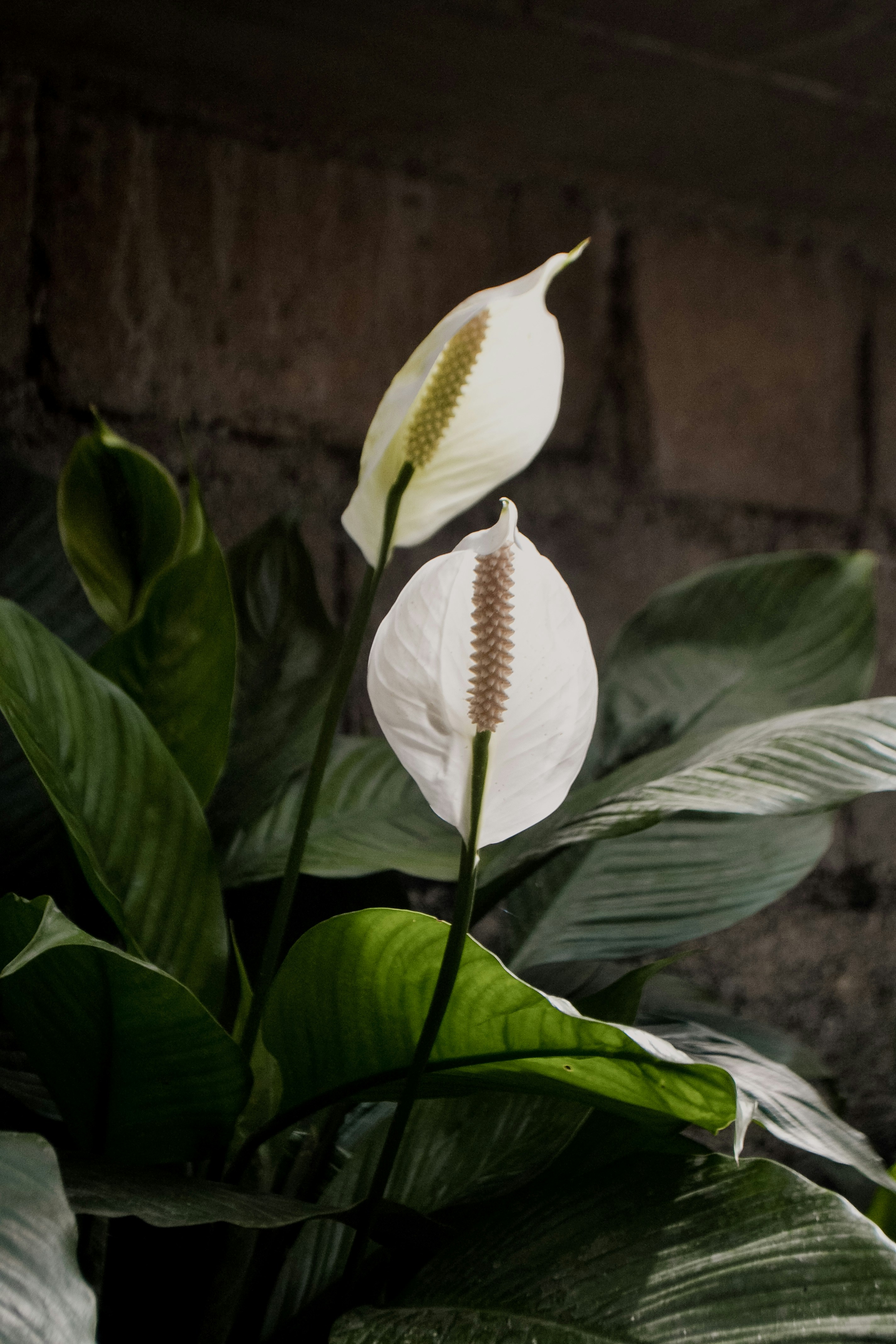
Why it’s great: Peace lilies have beautiful white flowers and can thrive in low light.
Peace lilies are known for their beautiful white blooms and lush green foliage. They are ideal for self-watering pots since they prefer consistently moist soil but not waterlogged roots. This balance is perfectly maintained by self-watering systems, which supply water as needed. Place your peace lily in a spot with indirect light and away from drafts. For the best results, flush the soil every few months to prevent the buildup of salts from fertilizers.
Tips for self-watering pots: These plants prefer moist soil. Self-watering pots help maintain the right moisture level, but don’t let them sit in waterlogged soil.
4. Snake Plant
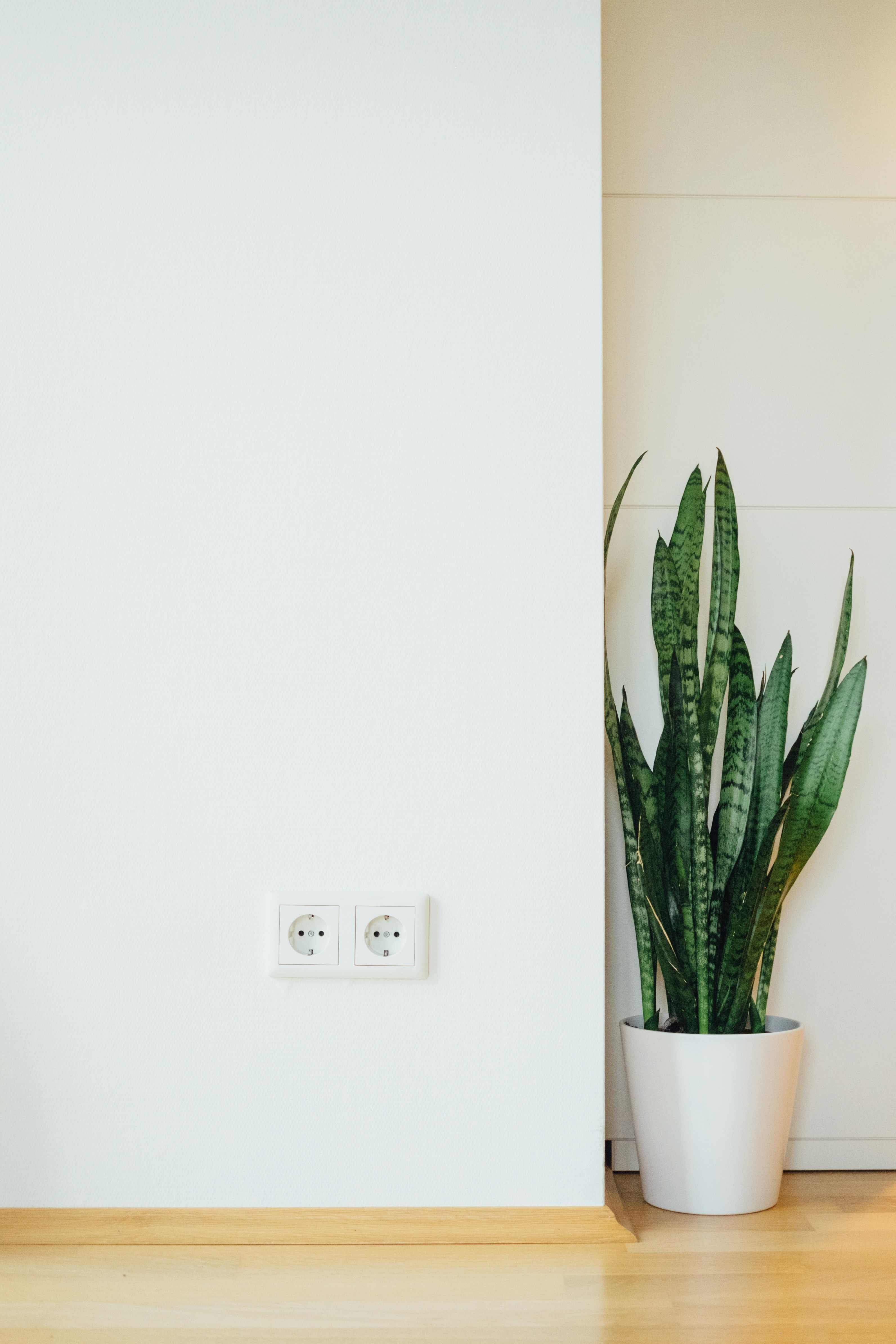
Why it’s great: Snake plants are super easy to care for and tolerate low light and irregular watering.
Snake plants, also known as mother-in-law’s tongue, are incredibly hardy and ideal for self-watering pots. These plants can tolerate low light and irregular watering, making them perfect for busy individuals. The self-watering pot ensures that the plant receives moisture as needed without becoming waterlogged. Place your snake plant in indirect light and occasionally wipe the leaves to remove dust. Fertilize sparingly, as too much can cause the leaves to flop over.
Tips for self-watering pots: Snake plants prefer drier conditions, so make sure the soil dries out a bit between waterings.
5. African Violet
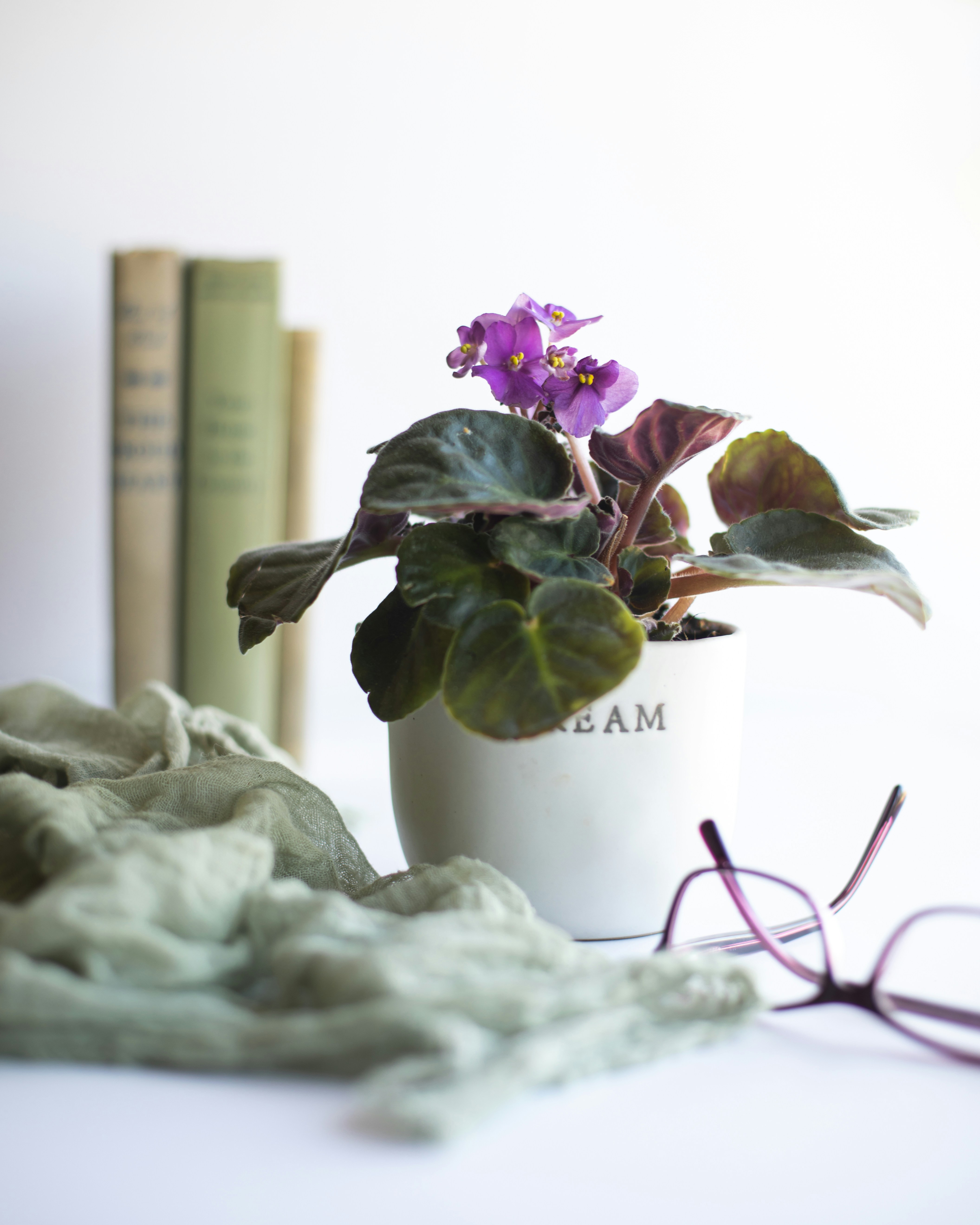
Why it’s great: African violets have lovely, colorful flowers and are perfect for indoor gardening.
African violets are a popular choice among indoor gardeners due to their charming, colorful flowers. They thrive in self-watering pots because they require a steady supply of moisture but are prone to root rot if overwatered. These pots ensure that the soil remains evenly moist, preventing common watering mistakes. Keep your African violets in bright, indirect light and turn the pots regularly to promote even growth. Feed them with a specialized African violet fertilizer to encourage continuous blooming.
Tips for self-watering pots: These plants love consistent moisture but don’t like wet leaves. Self-watering pots provide the right balance.
6. Basil
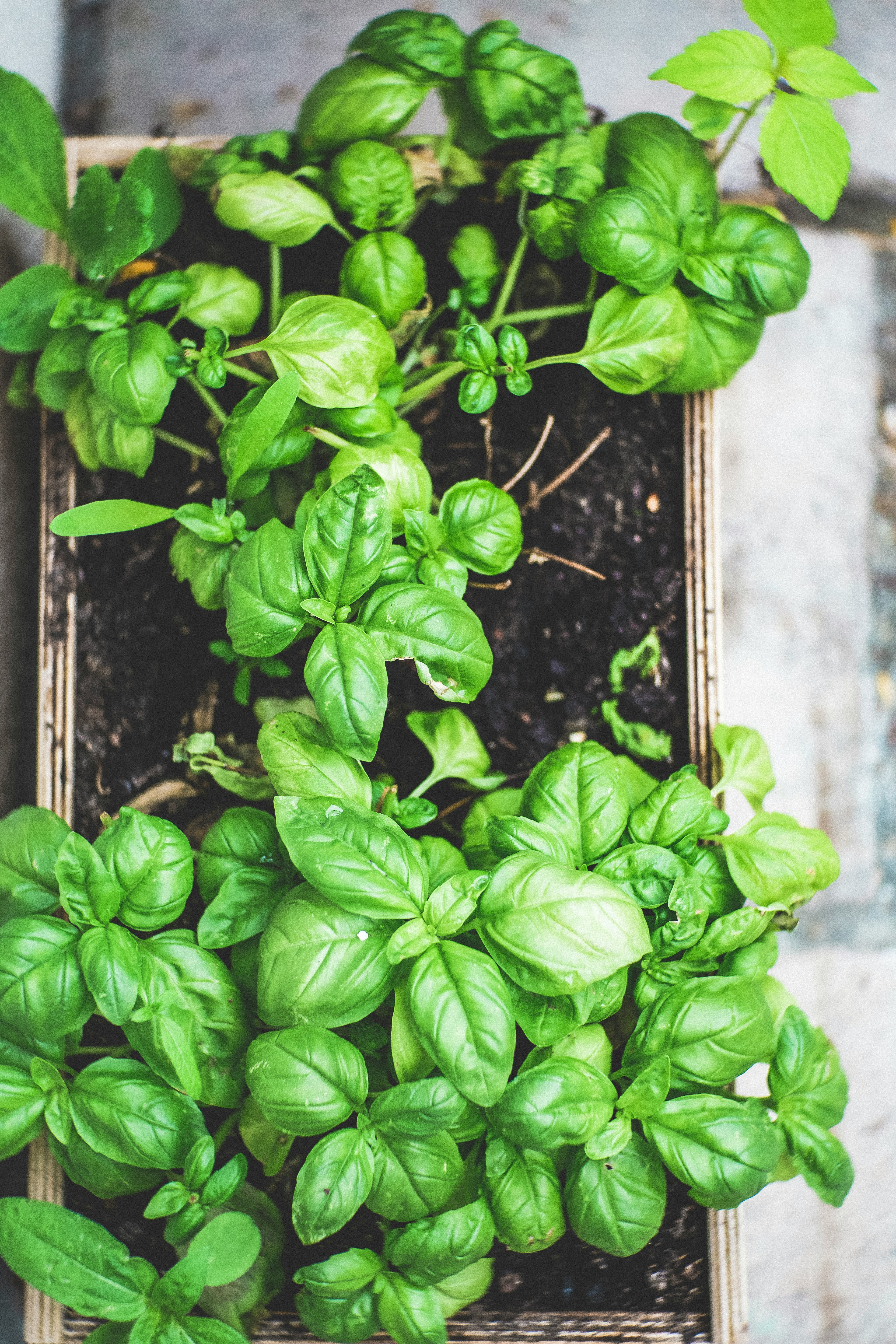
Why it’s great: Basil is my favorite herb to grow at home. Fresh basil can enhance your cooking and just smells amazing.
Herbs like basil, mint, and parsley are well-suited for self-watering pots, making it easy to have fresh herbs on hand for cooking. These plants need consistent moisture to produce flavorful leaves, and self-watering pots provide just that. Position your herb pots on a sunny windowsill or in a bright kitchen area. Remember to prune regularly to encourage bushy growth and prevent them from becoming leggy. A liquid fertilizer every few weeks will help keep your herbs lush and productive.
Tips for self-watering pots: Basil likes moist soil and lots of light. A self-watering pot will keep it hydrated, but make sure it gets plenty of sunlight.
7. Orchids
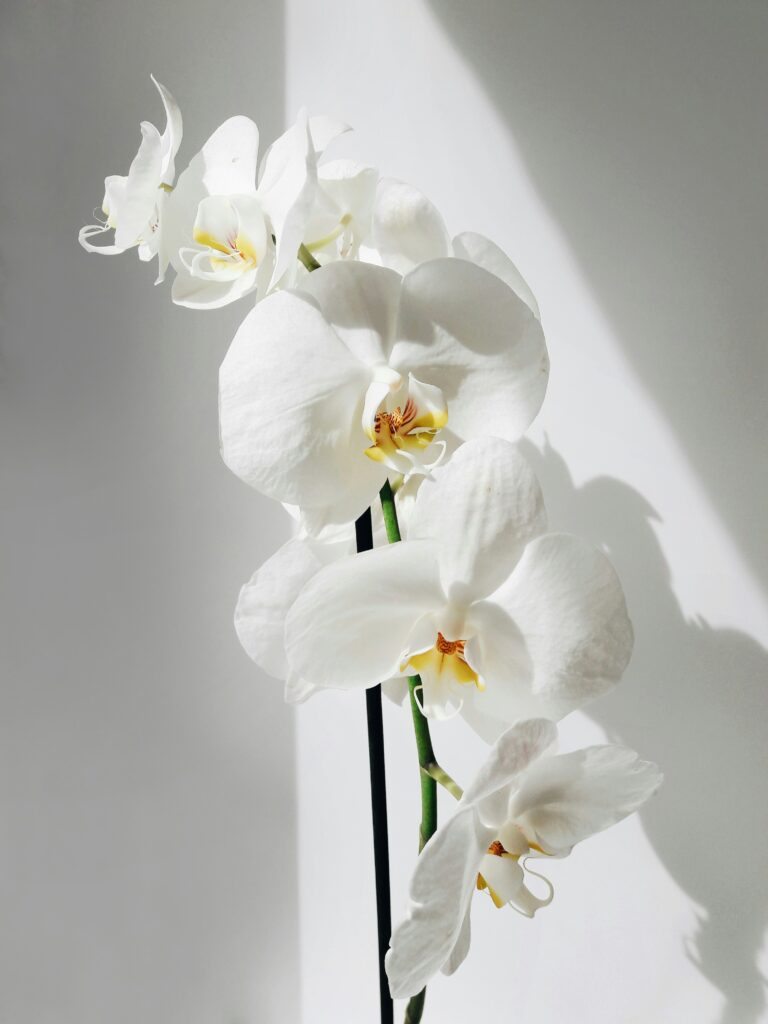
Why it’s great: Orchids add a touch of elegance to your space. The delicate blooms are lovely and long-lasting.
Orchids, particularly the Phalaenopsis variety, are a stunning addition to any home with their exotic blooms. They do well in self-watering pots as these help maintain the necessary humidity and moisture levels without the risk of overwatering. Place your orchid in a spot with bright, indirect light and use an orchid-specific fertilizer to support blooming. Ensure the potting medium remains aerated to prevent root rot, and trim any spent flower spikes to encourage new growth.
Tips for self-watering pots: Orchids enjoy moist soil but not soggy roots. A self-watering pot helps maintain the right moisture level.
8. Calathea
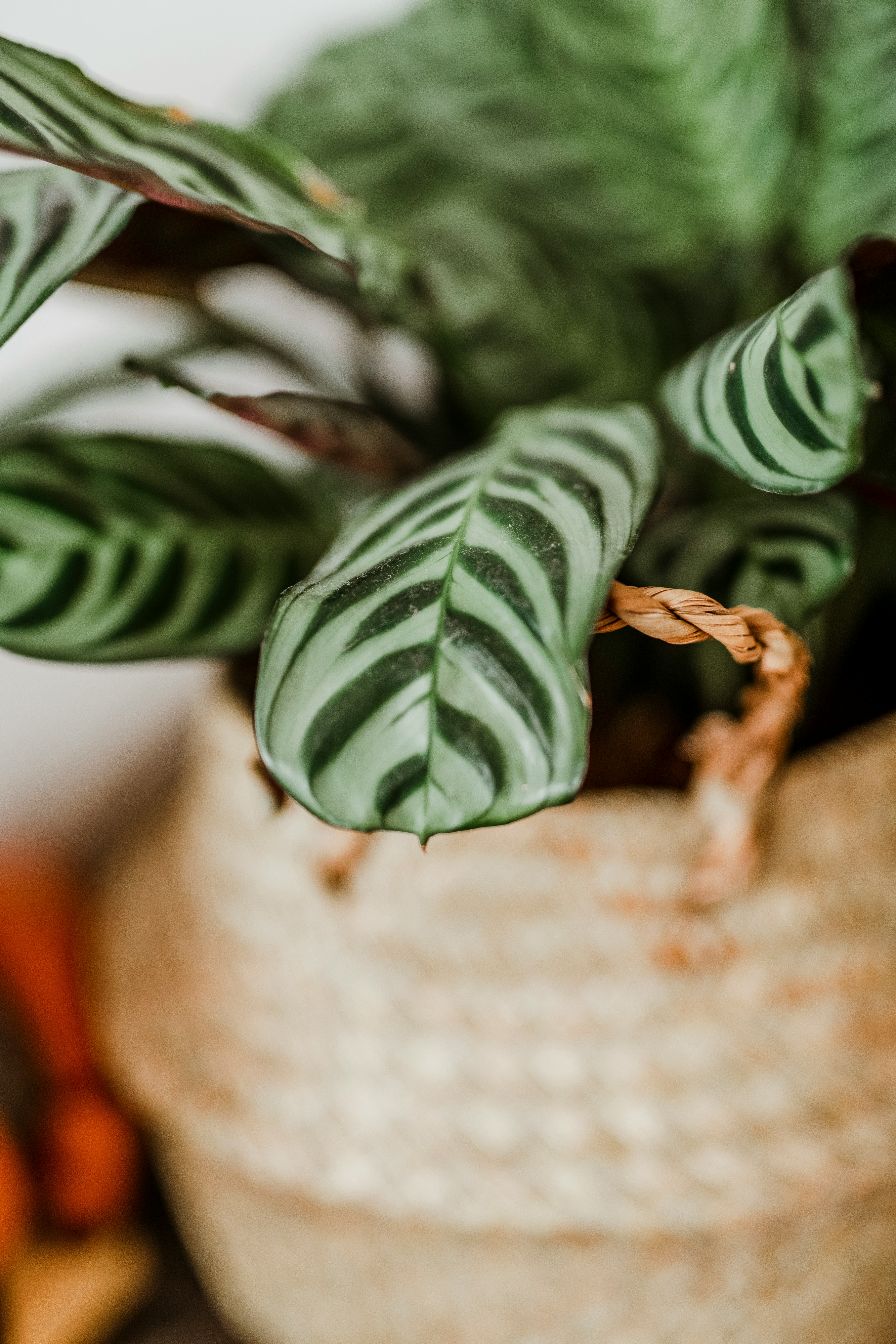
Why it’s great: Calathea plants have striking, patterned leaves and thrive in humid environments.
Calatheas are known for their striking leaf patterns and colors, making them a decorative houseplant favorite. They require high humidity and consistently moist soil, conditions easily met by self-watering pots. Position your calathea in medium to low light and keep it away from direct sunlight. Regularly clean the leaves to remove dust and increase humidity by misting or using a pebble tray. Use a balanced, water-soluble fertilizer monthly during the growing season for best results
Tips for self-watering pots: These plants enjoy moist soil but not soggy roots. A self-watering pot helps maintain the right moisture level.
9. Jade Succulent
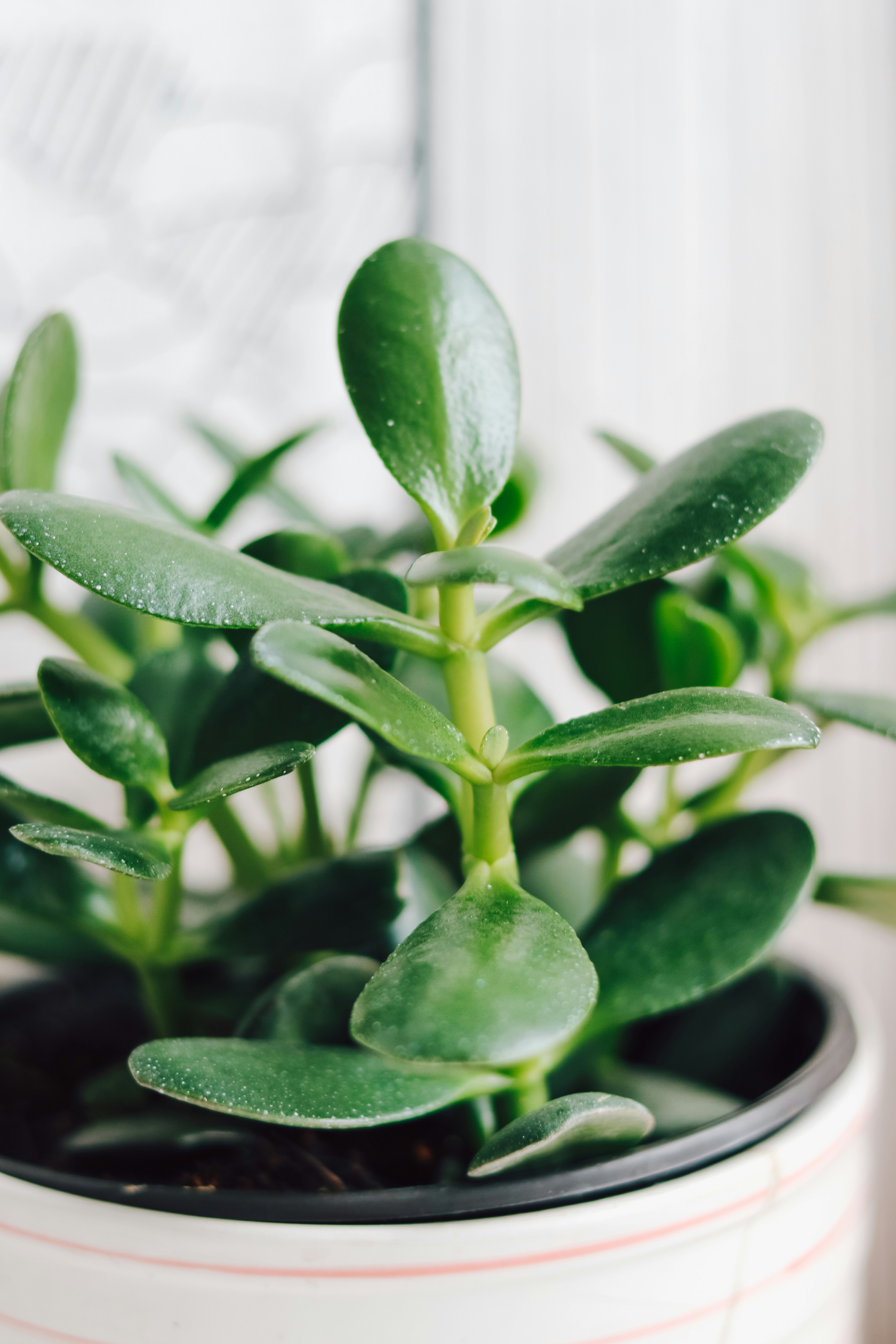
Why it’s great: Jade is resilient and grows well in various conditions. They have thick, green leaves.
Jade plants are a type of succulent that thrive in self-watering pots due to their need for well-draining soil and moderate watering. These pots help maintain the perfect balance of moisture, preventing root rot. Place your jade plant in a spot with plenty of bright, indirect light, and allow the soil to dry out between waterings. Use a cactus or succulent fertilizer during the growing season to keep the plant healthy. Trim the plant occasionally to maintain its shape and encourage new growth.
Tips for self-watering pots: Jade like moist soil. Self-watering pots keep the soil evenly moist, which is perfect for these plants.
10. Ferns
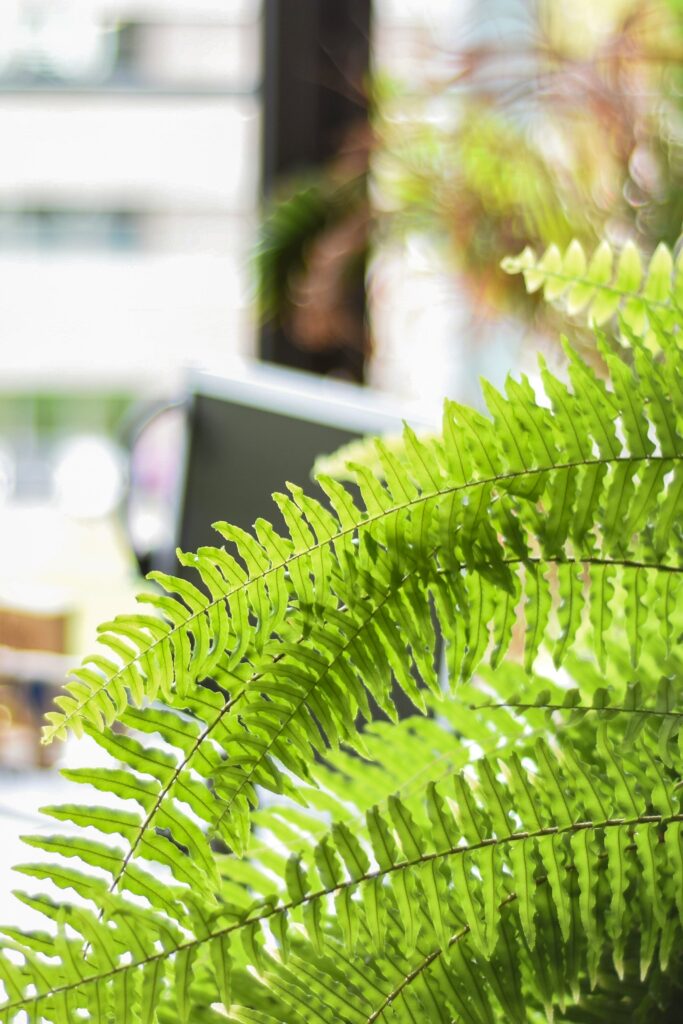
Why they’re great: Ferns are beautiful and add a touch of green to any space. They thrive in humidity.
Boston ferns are beloved for their feathery, arching fronds and air-purifying qualities. They thrive in high humidity and consistently moist soil, making them perfect candidates for self-watering pots. Place your fern in a location with indirect light and keep the reservoir topped up to ensure continuous hydration. To maintain its lush appearance, mist the foliage occasionally and remove any dead fronds. A slow-release fertilizer can provide the necessary nutrients for healthy growth.
Tips for self-watering pots: Ferns like consistently moist soil. A self-watering pot can help keep them hydrated, especially in drier indoor environments.
